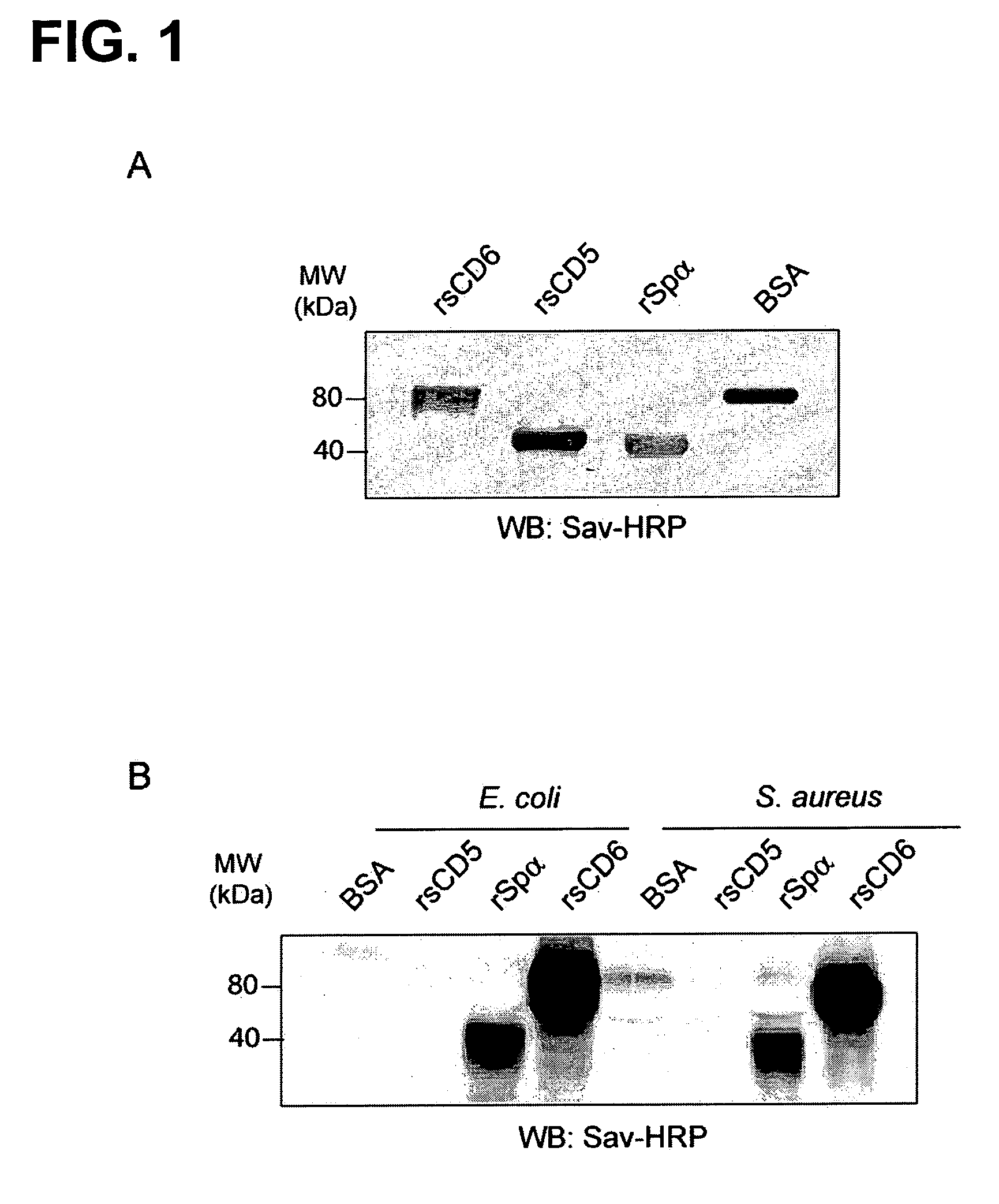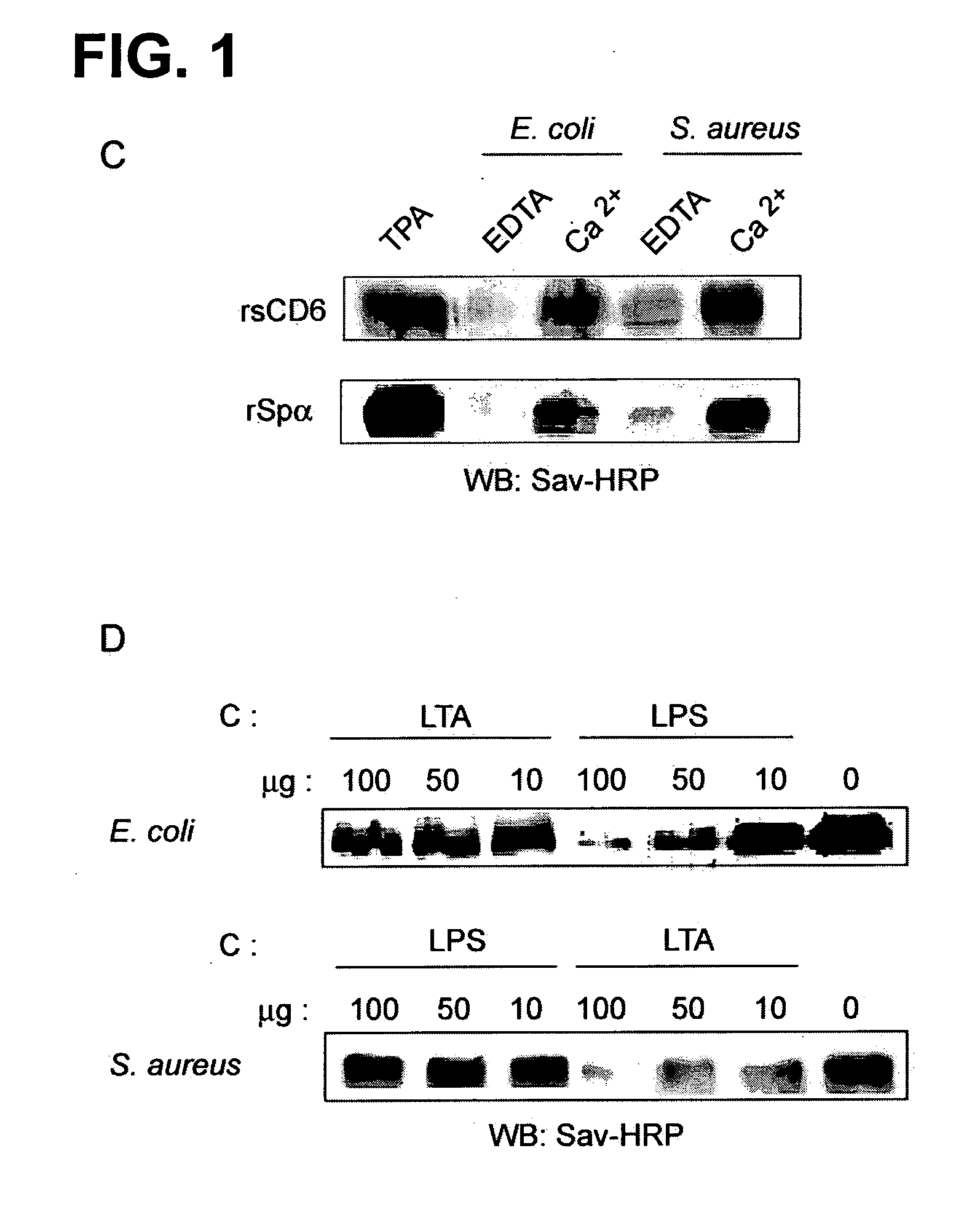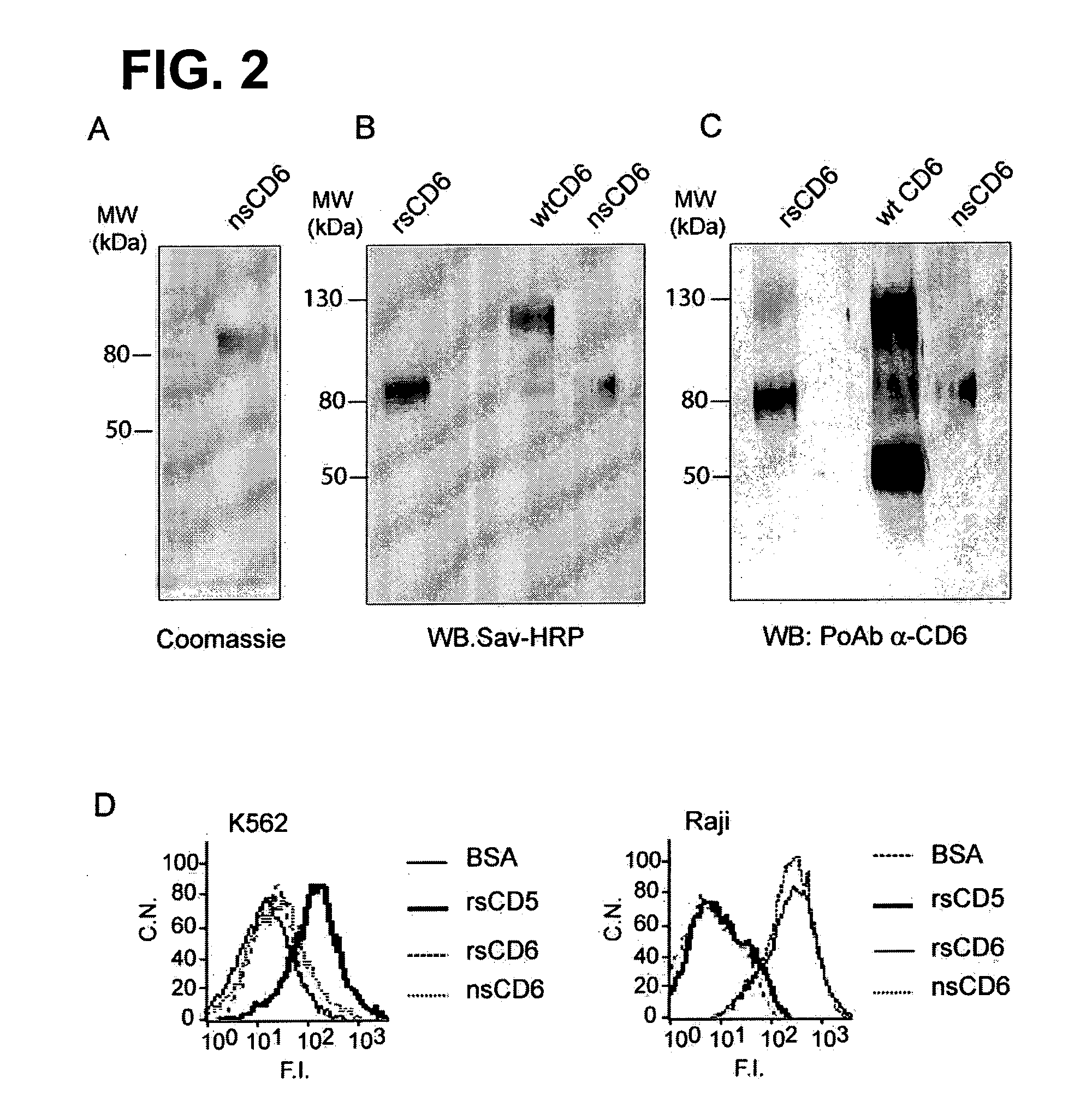Protein Product for Treatment of Infectious Diseases and Related Inflammatory Processes
a technology for infectious diseases and inflammatory processes, applied in the direction of peptide/protein ingredients, antibacterial agents, drug compositions, etc., can solve the problems of unreachable biochemical characterization, and achieve the effect of high affinity
- Summary
- Abstract
- Description
- Claims
- Application Information
AI Technical Summary
Benefits of technology
Problems solved by technology
Method used
Image
Examples
example 1
rsCD6 Binds to Gram-Positive and Gram-Negative Bacteria
[0066]To determine whether the ectodomain of human CD6 could directly bind to the surface of whole bacteria, the approach described in D. W. Dunne et al., “The Type-I Macrophage Scavenger Receptor Binds to Gram-Positive Bacteria and Recognizes Lipoteichoic Acid”, Proceedings of the National Academy of Sciences of the United States of America 1994, vol. 91, pp. 1863-7 was used. Thus, biotin-labeled recombinant soluble proteins encompassing the ectodomains of human CD5, CD6 and Spa (rsCD5, rsCD6, and rSpα) (FIG. 1A) were incubated with bacterial suspensions and their binding to bacterial pellets further assayed by SDS-PAGE and western blotting against streptavidin-HRP. The results show that rsCD6 bound to Gram-positive and -negative bacteria (FIG. 1B), indicating that this protein possesses bacterial binding activity. In contrast, neither rsCD5 nor the negative control BSA bound to bacterial suspensions. As illustrated by FIG. 10,...
example 2
Purification of nsCD6 from Human Serum
[0068]Natural sCD6 was affinity-purified from 1 l of pooled plasma. This yielded 6 μg of a single protein with a molecular weight (MW) of 80 kDa as deduced from SDS-PAGE analysis and Coomassie blue staining (FIG. 2A). The observed MW closely resembles that of recombinant soluble CD6 (rsCD6) produced in the laboratory, which is exclusively composed of the three extracellular SRCR domains of CD6, and is in contrast to that of the membrane form of CD6 (mCD6), which ranges from 105 to 130 kDa, depending on its degree of phosphorylation. The observed MW of the three different CD6 forms, i.e. rsCD6, nsCD6 and mCD6 immunoprecipitated from human HUT-78 T cells is shown in FIG. 2B. The purified nsCD6 protein was identified as CD6 by Western blotting assays with a polyclonal antiserum raised against the extracellular region of human CD6 (FIG. 2C). In cell binding experiments, both biotin-labeled rsCD6 and nsCD6 bound to Raji B cells but not to K562 erythr...
example 3
Binding of rsCD6 to LPS and Kinetics of the rsCD6-LPS Interaction
[0069]Further confirmation of the rsCD6-LPS interaction was obtained from direct binding ELISA assays in which plates were coated with LPS purified from three different E. coli strains (O55:B5, O111:B4, or O26:B6), and assayed for binding of biotin-labeled rsCD6, nsCD6, or BSA. The results presented in FIG. 3A show that, in accordance with the bacterial binding experiments in FIG. 1, both natural and recombinant soluble CD6 forms bound to LPS in a dose-dependent fashion. No BSA-LPS interaction could be observed.
[0070]The binding of rsCD6 and rsCD5 to a rough mutant (Re595) of LPS (Re-LPS) in solution was studied next by analyzing the changes in fluorescent properties of FITC-Re-LPS such as anisotropy and intensity. FIG. 3B shows the binding of rsCD6 and rsCD5 to FITC-Re-LPS by measuring fluorescence anisotropy of the labeled LPS molecule. Fluorescence anisotropy measurements depend on the rate and extent of the rotatio...
PUM
| Property | Measurement | Unit |
|---|---|---|
| concentrations | aaaaa | aaaaa |
| temperature | aaaaa | aaaaa |
| temperature | aaaaa | aaaaa |
Abstract
Description
Claims
Application Information
 Login to View More
Login to View More - R&D
- Intellectual Property
- Life Sciences
- Materials
- Tech Scout
- Unparalleled Data Quality
- Higher Quality Content
- 60% Fewer Hallucinations
Browse by: Latest US Patents, China's latest patents, Technical Efficacy Thesaurus, Application Domain, Technology Topic, Popular Technical Reports.
© 2025 PatSnap. All rights reserved.Legal|Privacy policy|Modern Slavery Act Transparency Statement|Sitemap|About US| Contact US: help@patsnap.com



